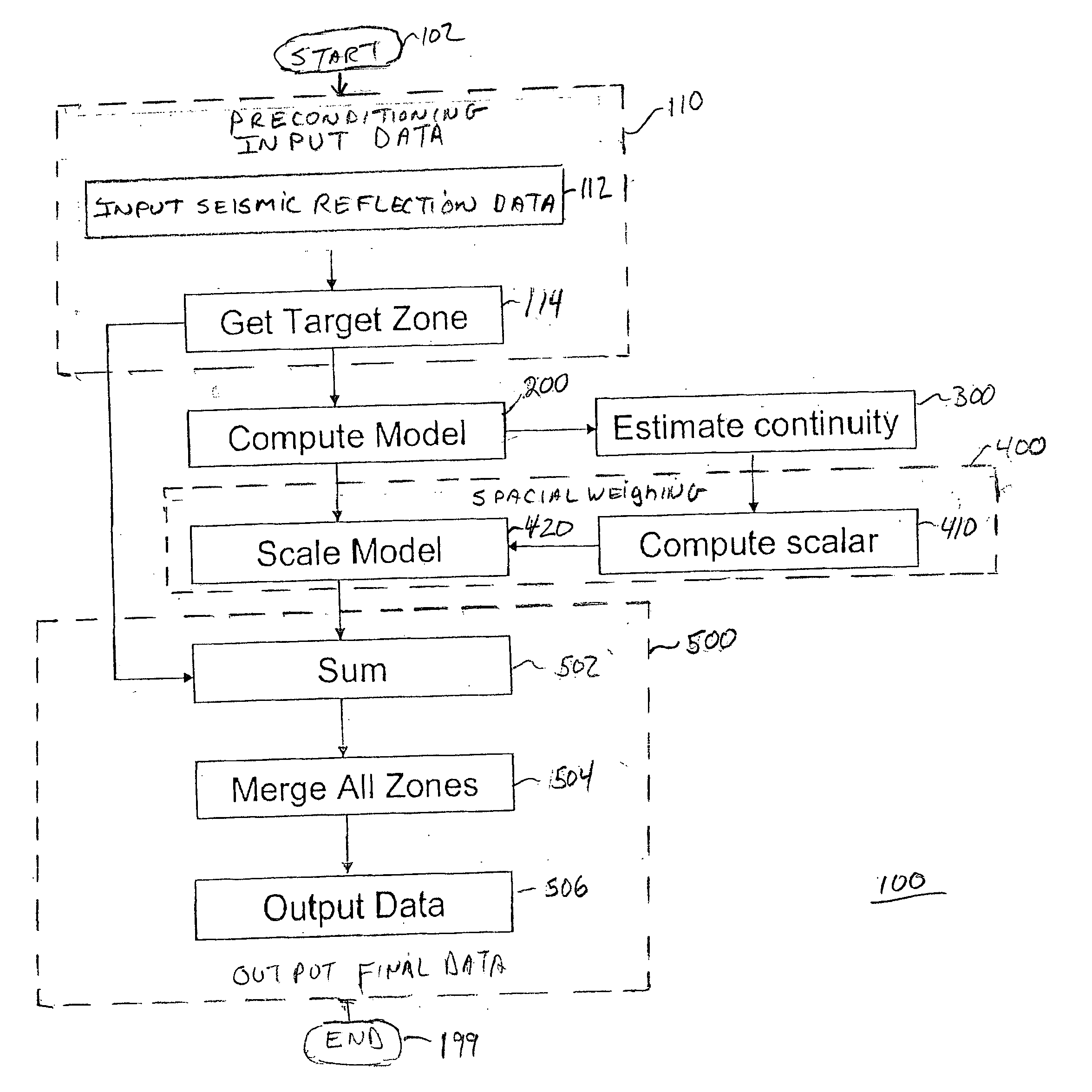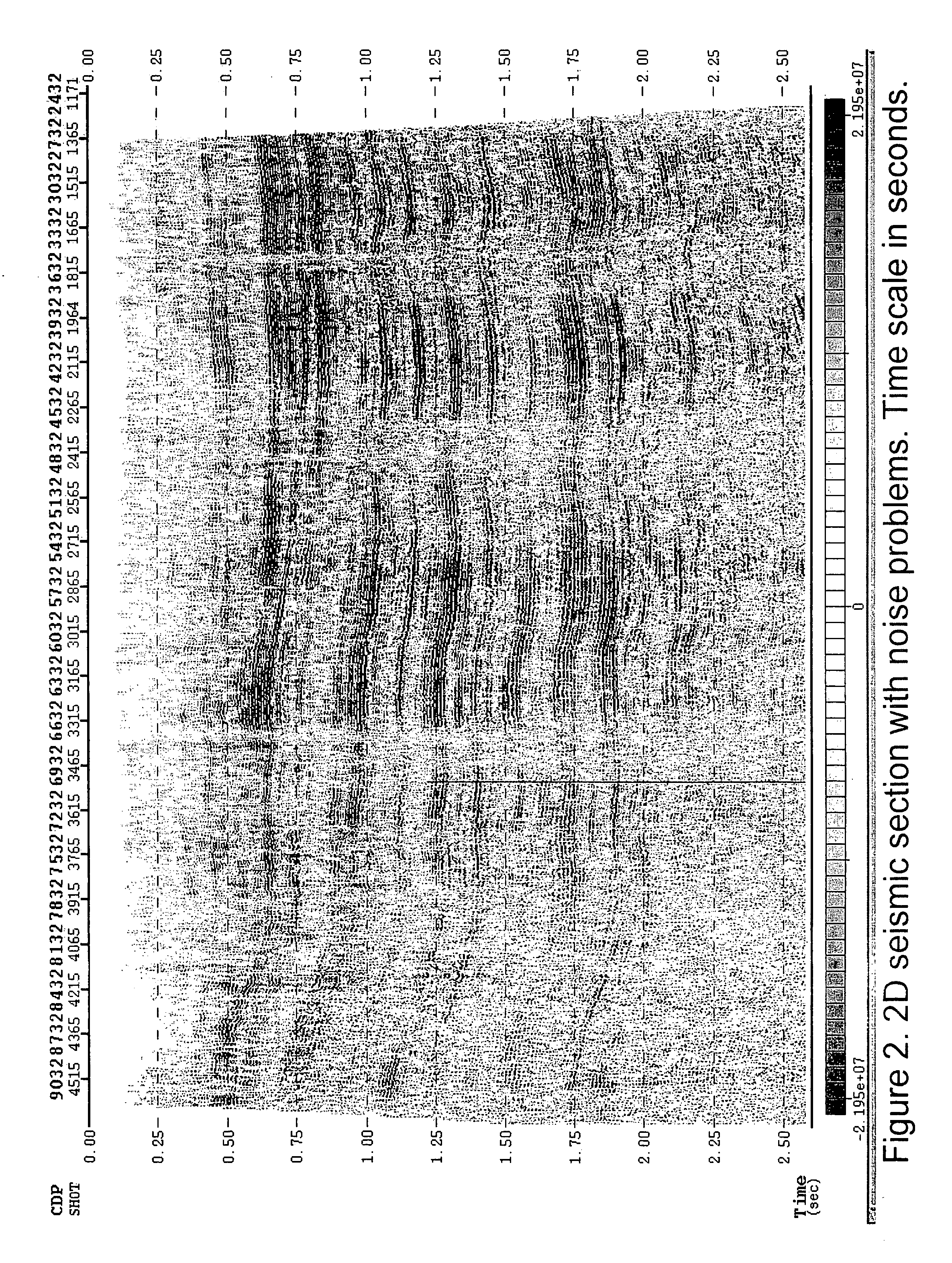Method for estimating and reconstructing seismic reflection signals
a seismic reflection and reconstruction method technology, applied in seismology, seismology, instruments, etc., can solve the problems of reducing and improving poor data zones. , to achieve the effect of avoiding a large amount of lateral mixing and not degrading the resolution of good quality data
- Summary
- Abstract
- Description
- Claims
- Application Information
AI Technical Summary
Benefits of technology
Problems solved by technology
Method used
Image
Examples
Embodiment Construction
[0047] At noted above, the principal estimation and reconstruction (PEAR) method of the present invention differs from typical methods for improving signal-to-noise ratio that focus on the reduction of noise levels because PEAR balances signal levels, which has the effect of improving the signal-to-noise ratio. To obtain this result, PEAR utilizes an estimate of the signal, even in poor data areas. This estimate is provided by further processing the input data using the Karhunen-Loeve transform of the input data.
[0048] The PEAR method is implemented as a series of steps with existing commercially available software programs and modules that are capable of being executed by computer systems conventionally known in the art. The work flow can be described as shown with respect to FIG. 1.
[0049]FIG. 1 is a flow diagram illustrating a principal estimation and reconstruction (PEAR) method 100 of the present invention. The method 100 comprises five principal steps including preconditionin...
PUM
 Login to View More
Login to View More Abstract
Description
Claims
Application Information
 Login to View More
Login to View More - R&D
- Intellectual Property
- Life Sciences
- Materials
- Tech Scout
- Unparalleled Data Quality
- Higher Quality Content
- 60% Fewer Hallucinations
Browse by: Latest US Patents, China's latest patents, Technical Efficacy Thesaurus, Application Domain, Technology Topic, Popular Technical Reports.
© 2025 PatSnap. All rights reserved.Legal|Privacy policy|Modern Slavery Act Transparency Statement|Sitemap|About US| Contact US: help@patsnap.com



